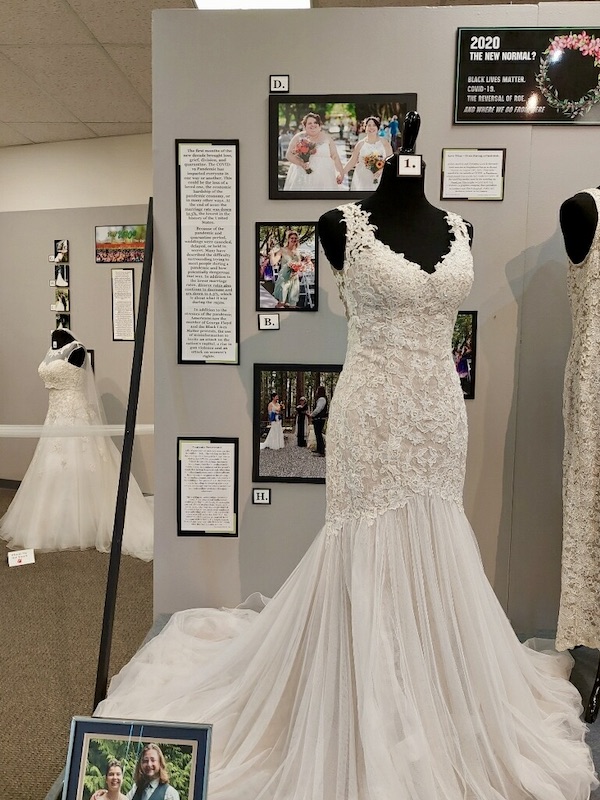Tales of the Magic Skagit: “I Do!” Traces the Evolution of Marriage in the Magic Skagit
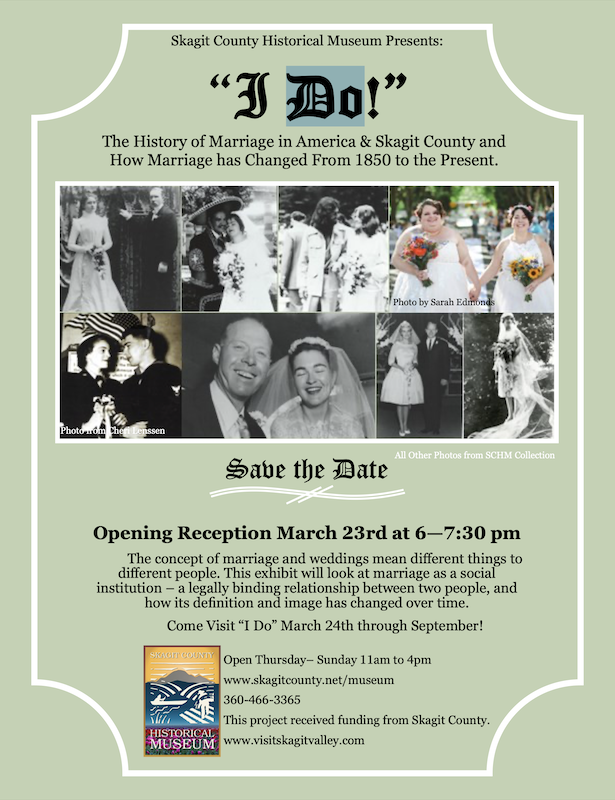
The Skagit County Historical Museum’s current exhibit, “I Do!”, finishes its run at the “top of the hill” in La Conner at the end of the month. For her second “Tales of the Magic Skagit” story, I asked our Skagit Valley Youth History Project intern, Morgan White, to write a story about it based her visit to the exhibit, as well as a previous TMS podcast interview with museum executive director Jo Wolfe and collections manager Laney Moran. The result is an overview of the exhibit’s narrative that spans more than a dozen pivotal periods in U.S. and Skagit Valley history.
“I Do!” tells the “history of marriage in America and Skagit County, and how marriage has changed from 1850 to the present.” The Museum’s inspiration started off with them getting a whole bunch of donated wedding dresses. Faced with uncertainty on how best to display them, Collections Manager Laney Moran came up with the idea of providing a broader context for their display — or as Laney explained, to “put some meat on the bones” of the artifacts.
“We came up with the concept of using wedding costumes to talk about the impact of social change on marriage,” Laney said in a recent Tales of the Magic Skagit podcast episode.
Laney also pointed out an interesting fact about the donated wedding clothes. “They start in the late 1800s, and everybody was so small back then that we had to use child mannequins to display them. They wouldn’t fit our adult mannequins.”
As a 16-year-old female, I never put any thought into the history of marriage, or marriage itself, so this exhibit was really interesting. I wanted to see how events in America changed our concept of marriage over time, and as someone whose generation does not really care as much about this issue, it was a great to learn about the history of marriage over more than a dozen time periods covered by the exhibit displays.
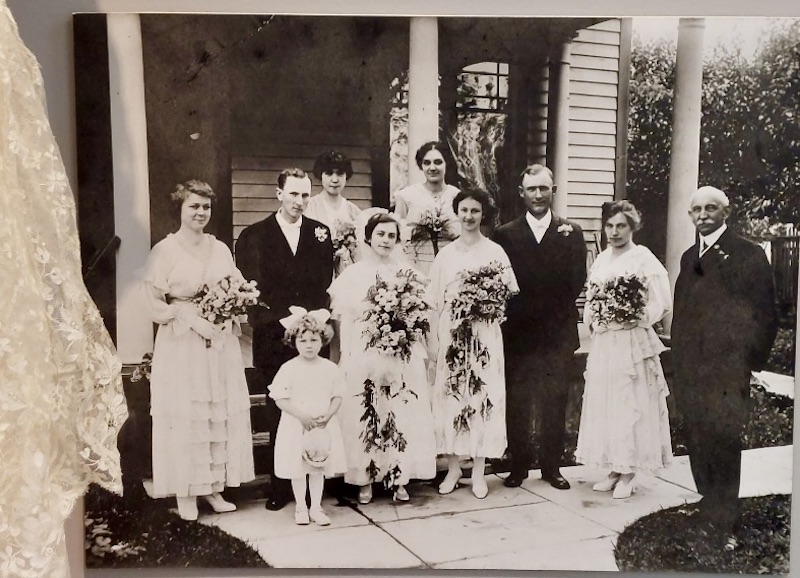
The 1800s: The Civil War, Coverture, and the Birth of Skagit County
The Civil War was the first time in American history that the government had to define what qualified as “marriage documentation.” Before the Civil War, there had not been a reason for such documentation, but it became an issue with widows trying to collect their late husbands’ military pensions. This caused the government to make marriage an official and legal process.
There was also the issue of “coverture” (women’s legal status in marriage). As Jo Wolfe pointed out, “In the early days if a woman got married she became the property of her husband and her identity was lost.” It hit me really hit me hard to think that I would have had to live like that.
The exhibit also told the story of John Wilbur, who married two women in 1865. He first married a woman named Kitty who belonged to the Swinomish tribe, and later married a white woman he brought from New York to the Skagit Valley.
In the Swinomish tribe, men would offer gifts to the chief in exchange for a wife. Wilbur made three offers before finally paying $60, which was the highest price paid for a wife at that time. Wilbur and Kitty had three children together, but when he married a white woman in 1876, he abandoned Kitty.
The story ended with Wilbur’s two wives arguing over his estate, and the court ruling in favor of Kitty. It’s strange to think that men used to buy women like it was an auction and could return them anytime they wanted to, but what surprised Laney was that it was Kitty who ended up being the one to inherit her late husband’s ranch.
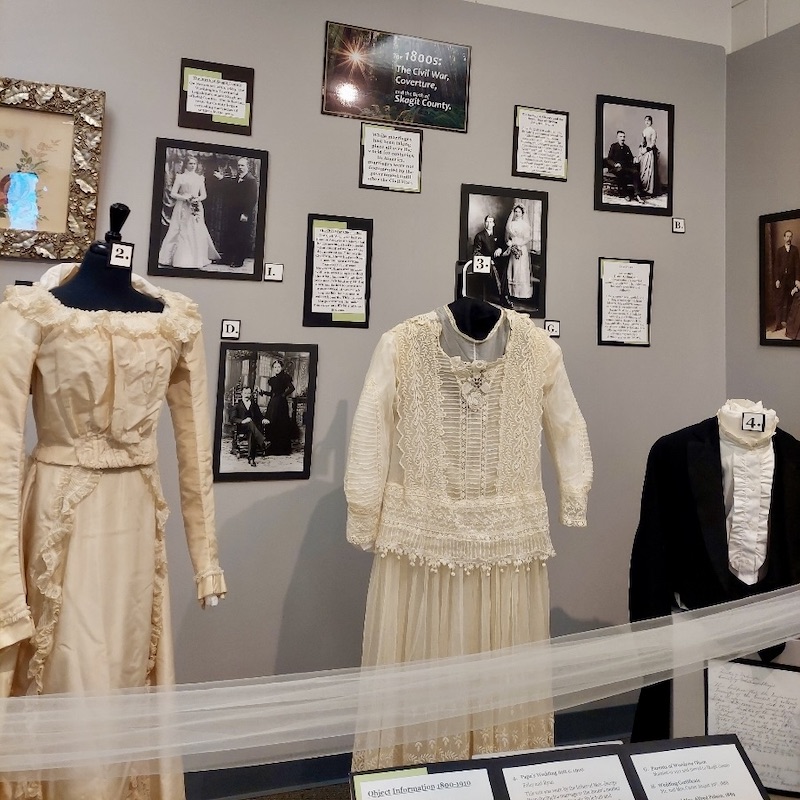
1914-1919: World War I & Women’s Rights
Women became more independent and had more choices in whom they married during World War I. Divorce was rare, and the government encouraged marriage and procreation to rebuild the population after the war, which was different from the 1800s when men were purchasing women with cash. It was the first time in American history that women were encouraged to work outside their homes, and it highlighted the need for legal recognition of women’s rights.
The exhibit presented an interesting story about the “Citizenship and Expatriation Act of 1907.” The story featured a woman named Helen, who was born in Ballard, Washington in 1898. In 1919, she married Louis Nelson, who came from Sweden on the Lusitania. The Expatriation Act stated that if an American woman wanted to marry a man who was not a U.S. citizen, she would have to give up her citizenship.
Helen had to give up her U.S. citizenship to marry Louis, and they remained married for ten years until he passed away in 1929. In 1932, she married Ralph Millward, but to do so, she had to reapply for her U.S. citizenship. She was required to renounce her loyalty to King Olaf of Sweden (even though she never lived there) and complete a lot of paperwork. This law was biased against women and did not apply to men, which highlighted the sexism of the time.
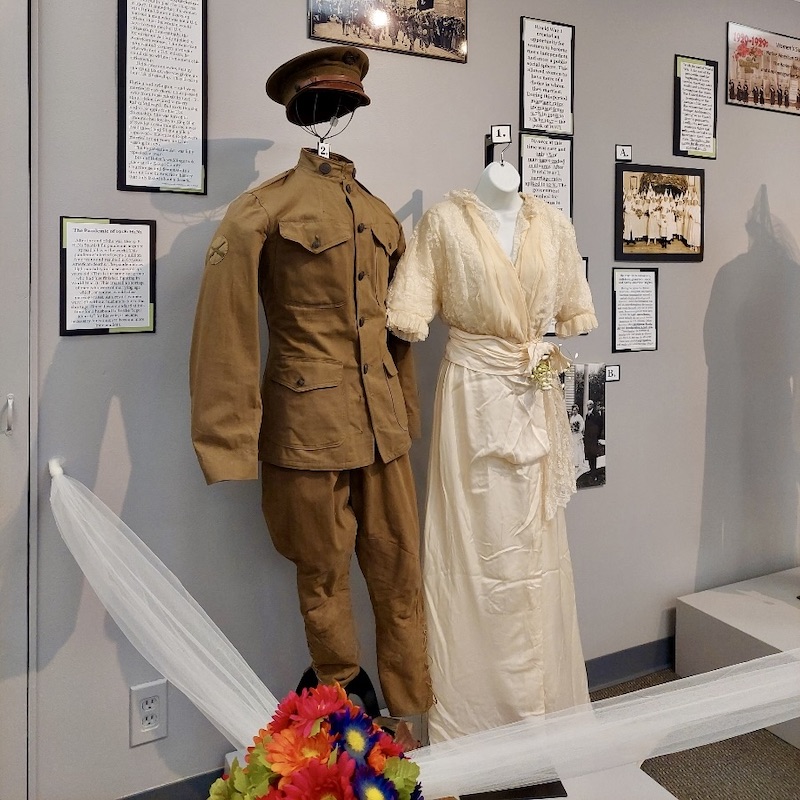
1920-1929 : Women’s Suffrage and Anti-Immigration Sentiment
The 1920s was a period of significant social and cultural change in the United States. After the end of World War I and the “Spanish Flu”pandemic, marriage rates continued to rise, and “dating” as we know it became more popular. Women began to experience more freedom and independence, which also resulted in a higher divorce rate.
African-American, immigrant, and Native American communities also experienced a period of cultural growth, although racial discrimination was still prevalent throughout the country. Congress passed laws such as the 14th Amendment, granting women the right to vote — a sign of social change and progress toward equality.
Something I never thought I would ever see, however, was also in this exhibit. There was a picture of a “KKK Wedding,” which took place in Sedro Woolley on June 16, 1926. This seems weird in today’s world, but in the 1920’s there was a solid anti-immigrant sentiment that was widespread across America. White Americans were threatened by immigrants “taking” jobs that white Americans felt entitled to. These negative feelings led to the rise of white supremacists during the 1920s.

1929-1939: The Great Depression
On the eve of the 1930s, the United States stock market crashed and left millions of Americans in financial turmoil. As one could imagine, this was a stressful time for many Americans and is reflected in the marriage and divorce rates of this decade. In the late 1930s, on the eve of World War II, financial recovery led to an increase in both divorce and marriage rates. The financial growth from the war meant that Americans who wanted a divorce or marriage during the Depression but were unable to afford them were now able to pay for these services.
On a lighter note, the story of Earl and Alice Moore is a charming one. They they met while working at the Lincoln Theater as “ushers” and “usherettes,” and Alice was selected to be the first June bride for a special promotion. They were married at midnight on June 1st in the theater where they first met, and their family’s history in Skagit County continues to this day through their son Bud Moore. This story was really cute and even included the curtains from the Lincoln Theater.
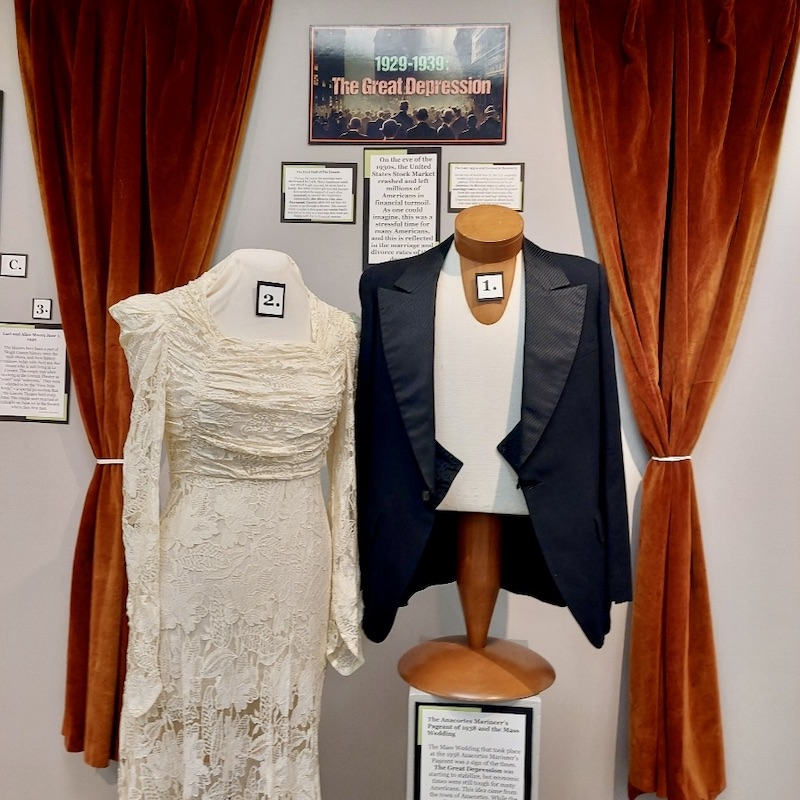
1939-1945: World War II
World War II resulted in the highest marriage rates in United States history. This was due to the increase in economic stability and the US government’s push for Americans to have families to replenish the lives lost during the war. However, the war also led to an increase in the divorce rate due to the increased independence of women.
One of the stories that I found really enjoyable in the exhibit was “The First Coast Guard Couple.” It was about Robert and Donna Smith, who first met while they were serving in the Coast Guard in February 1943. Donna was part of SPARS, the Coast Guard Women’s Reserve, and she was one of the first women to join the program. The two got engaged that March and were married on April 21, 1943. They were featured in an article in the Reservist in July 2005. At the time the article was published, they had been living in Mount Vernon for a while and were celebrating their 62nd wedding anniversary.
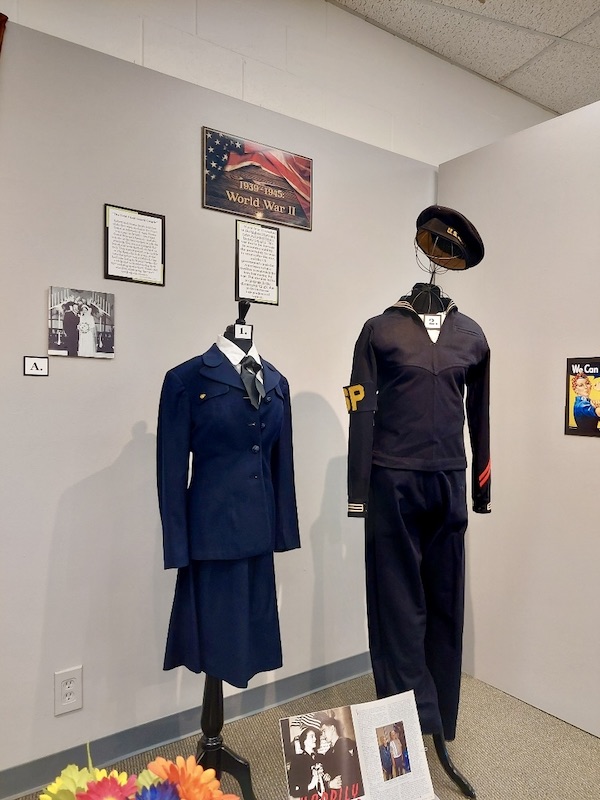
1950s: The Creation of the Nuclear Family
The societal norm in the 1950s was for a man and woman of the same ethnicity to get married and have two children. This led to people marrying and having children at a younger age, and the concept of the nuclear family prevented divorce. At the time, the LGBTQ movement faced negative attitudes, but the discussions happening in the media helped raise awareness. Examples of mainstream attention include the American Psychiatric Association’s diagnosis of homosexuality as a “sociopathic personality disturbance,” and Executive Order 10450 banned homosexuals from working in the government.
The Crawford-Anderson wedding in 1957 was an interesting story as it was a shock to their friends and neighbors since they were both getting married for the first time at ages 30 and almost 50. They courted mostly by letter and only spent less than two weeks together before the wedding ceremony, which took place in an episcopal church in Portland, Oregon.
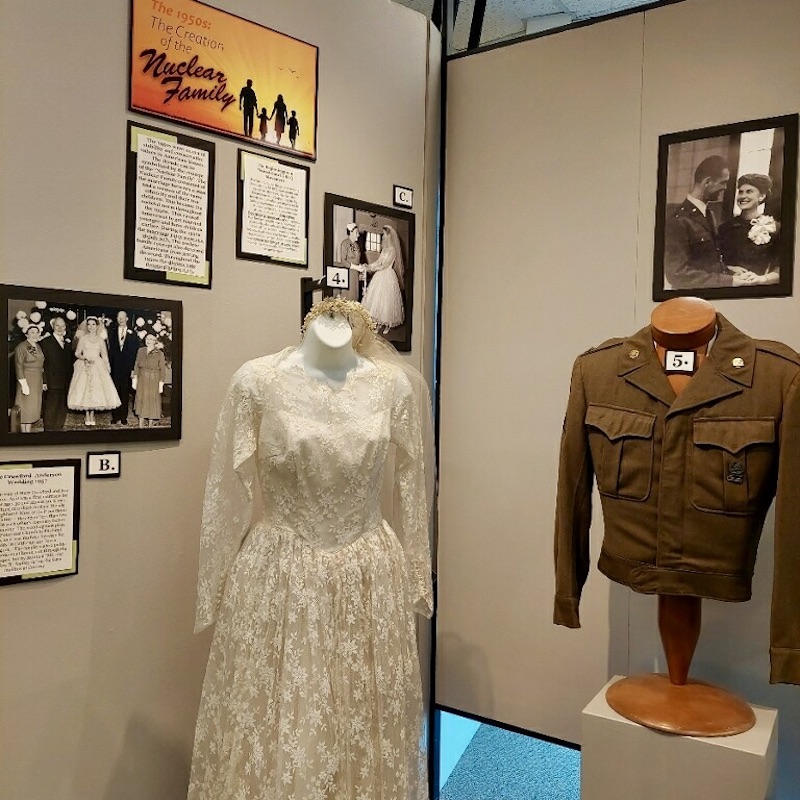
The 1960s: A Time of Social Revolution
The 1960s were a time of upheaval and transformation in American society. The feminist, civil rights, and LGBTQ movements were all gaining momentum and challenging traditional conservative ideals. Significant progress was made during this era, including the passage of the Voting Rights Act of 1965 and the legalization of interracial marriage. However, the era also saw an increase in divorce rates as societal norms shifted.
One couple who got married during this time, Janene Hultman and Gerard “Gerry” Kenaston, did so with little money and without an engagement ring. Janene’s parents gave her $100 for a wedding gown and going-away dress, and she found her dress at a woman’s dress shop instead of an expensive bridal boutique. The Kenastons are still residents of Samish Island today.

The 1970s: Disillusionment & Division
The 1970s was a time of significant social and cultural change in America. Due to an increased media presence in the lives of Americans and an economic downturn, there was a general feeling that America in the 1970s was not what it used to be. This created a divide amongst the American public between the conservative older generation and the younger more liberal generation. The older generation wanted to return to their religious and conservative roots because it was what they felt was a safe and more prosperous time in American history. This point of view drastically clashed with the younger generation’s push for cultural change and advocacy of minority groups.
The LGBTQ movement continued to fight for equality throughout the 1970s. In 1970, the first gay pride marches took place across the United States to mark the anniversary of the Stonewall riots. This public support pushed the American Psychiatric Association to change their previous statement about homosexuality being a mental disorder that can be cured. The APA also determined that homosexuality occurs naturally and that sexual orientation is a “freewill choice.” In 1979, the first national march on Washington for lesbian and gay rights occurred resulting in widespread media attention. While same-sex marriage was still illegal, the growing acceptance and support demonstrated by these changes and marches throughout the 1970s is an important part of the advocacy for same-sex marriage.
The 1980s: A period of regression and uncertainty
The 1980s were a period of conservative policy and backpedaling on the progress made during the 60s and 70s. This was a turbulent decade characterized by the presidency of Ronald Reagan, the escalation of the Cold War, the AIDS epidemic, and a stagflation economy. These factors took a toll on the progressive movement and the marriage rate as well. However, it’s worth noting that the tradition of passing down wedding dresses from one generation to the next continued during this time and still continues today.

The 1990s: The Impact of the Media
The ‘90s were marked by an increased media presence, thanks to the invention of the internet. Americans became more connected than ever before, and this connection was reflected in the social issues that occurred throughout the decade. With the media now at the forefront of everyday life for Americans, it is not a stretch to think that marriage could have been affected by events portrayed by the media. During the ‘90s, the divorce rate continued to decline, while at the same time marriage rates were also down. Americans were getting married and divorcing less often than before.
Despite the progress made in women’s rights since the 1960s, the influence of the media in the 1990s sought to tear them down. Women were being criticized nationally for things such as their weight, their marriages, their identities, their occupations, and anything else that the media could get their hands on. This media attention had negative effects on the marriages of those who became targets of the media.
However, amidst all this negativity, there was a cute story that caught my attention. It was a Conway classic that tells the story of Mari Anderson and John Densmore, who met at another wedding where he was the best man and she was the maid of honor. He knew everyone except Mari, and she knew no one except the bride. The dress Mari wore was originally purchased at Belle Bridal Shop in Bellingham, WA. The Anderson family has been living in Skagit County for generations.
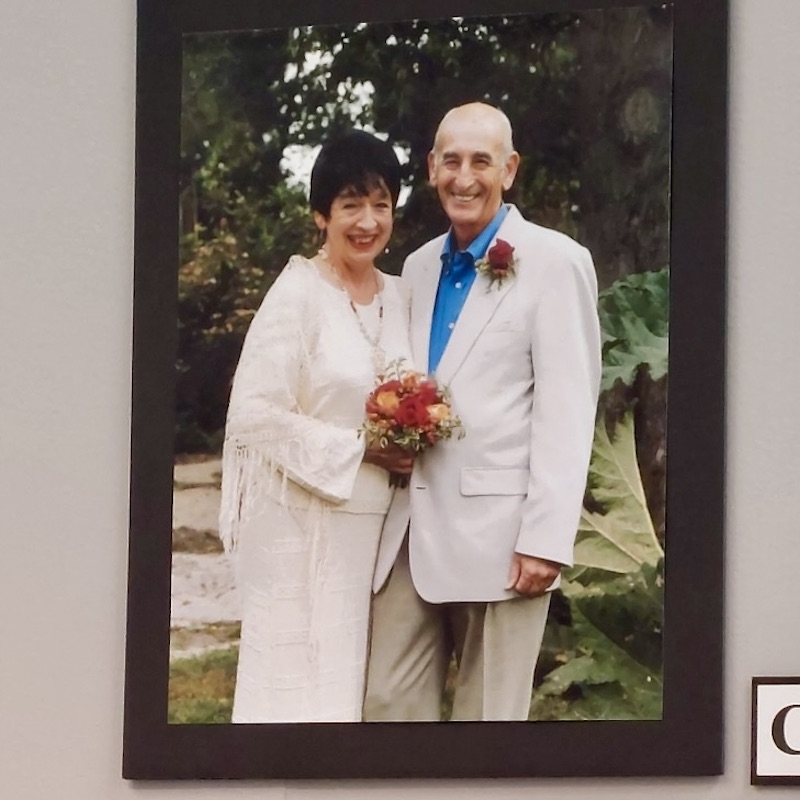
The 2000s: Recession, Remarriage, and the Continued Struggle for LGBTQ Equality
In the 2000s, marriage and divorce rates continued to decrease, and many people were waiting to get married until later in their lives. However, remarriage became much more common during this time. The impact of the 2007 recession, now known as “The Great Recession,” was immense and had significant impacts on families, homes, and marriages. It’s interesting to see how the economic situation can affect the institution of marriage. It’s worth noting that in 2008, Barack Obama won the presidency and became the first African-American to hold the position, which was a major victory for the equal rights movement. This was a significant moment in history, and it’s interesting to see how far we’ve come in terms of equal rights.
Additionally, I came across a heartwarming story about finding love later in life. Lavone Newell and Dick Reim initially met in 1996 while shopping at Thrifty Foods in Burlington. Dick’s sister Kathy was friends with Lavone and introduced the two again at a party in 2000. Before her passing in 2021, Lavone said, “Finding my soulmate late in life provides new inspiration for my artwork and writing.” It’s always heartwarming to hear stories like this, and it goes to show that it’s never too late to find love.
The 2010s: The Good, The Bad, and the Ugly
In the early 2010s, the LGBTQ movement had major victories, including the legalization of same-sex marriage and the repeal of the Defense of Marriage Act, which defined marriage as a union between a man and a woman. Despite these advances, marriage and divorce rates across the country continued to decrease.
The African-American community also continued to fight for equality with the re-election of Barack Obama in 2012 and the founding of the “Black Lives Matter” movement. Interracial marriages became much more common, and by 2017 nearly 17% of all marriages in the United States were interracial.
2020 The New Normal?
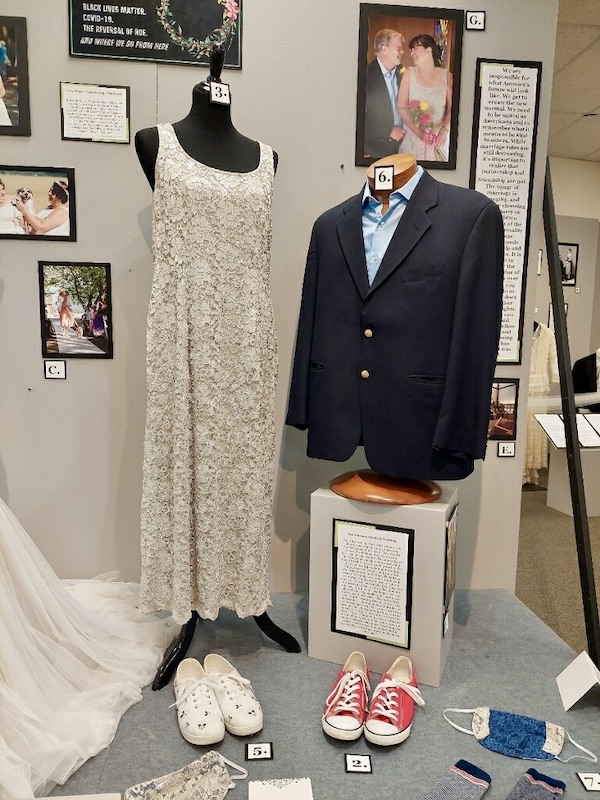
The COVID-19 pandemic has had a significant impact on various aspects of life, including marriage and divorce rates. At the end of 2020, the marriage rate had reached an all-time low in the United States due to canceled, delayed, or secret weddings caused by the pandemic and quarantine. Interestingly, divorce rates have also decreased to levels similar to those in the 1950s. However, these trends are just one of many stresses resulting from the pandemic, the murder of George Floyd and the black lives matter protests, the use of misinformation to incite an attack on the nation’s capital, a rise in gun violence, and an attack on women’s rights.
An interesting story was that of Sally Wegner and Ian Anderson. Sally and Ian got married on September 4th, 2021, in the backyard of the bride’s parents in Mount Vernon. The wedding was officiated by a longtime family friend, and it was a small gathering with only immediate family members in attendance. The groom’s family even flew in from Iowa to be there. Due to the COVID-19 pandemic, the wedding was held outside, including the reception. It sounds like a beautiful and intimate celebration.
In conclusion, marriage has evolved significantly over time, from being primarily a practical and economic arrangement to a union based on love and companionship. Today, marriage is a personal choice that allows individuals to express their commitment to each other and form a partnership that fulfills their emotional, social, and economic needs. While the institution continues to face challenges and changes, the core values of mutual trust, love, respect, and support remain crucial to a healthy and successful marriage.
I loved the exhibits as someone that is younger and around a lot of people who don’t even think about marriage or how it started. I used to not find this kind of stuff interesting, but I just enjoy seeing things such as marriage change so much over time due to different events. Again, I loved how the museum taught me the history of marriage through the beautiful donations. As Laney Moran said, “We did this to educate people about how marriage has changed and what it impacted it.”
